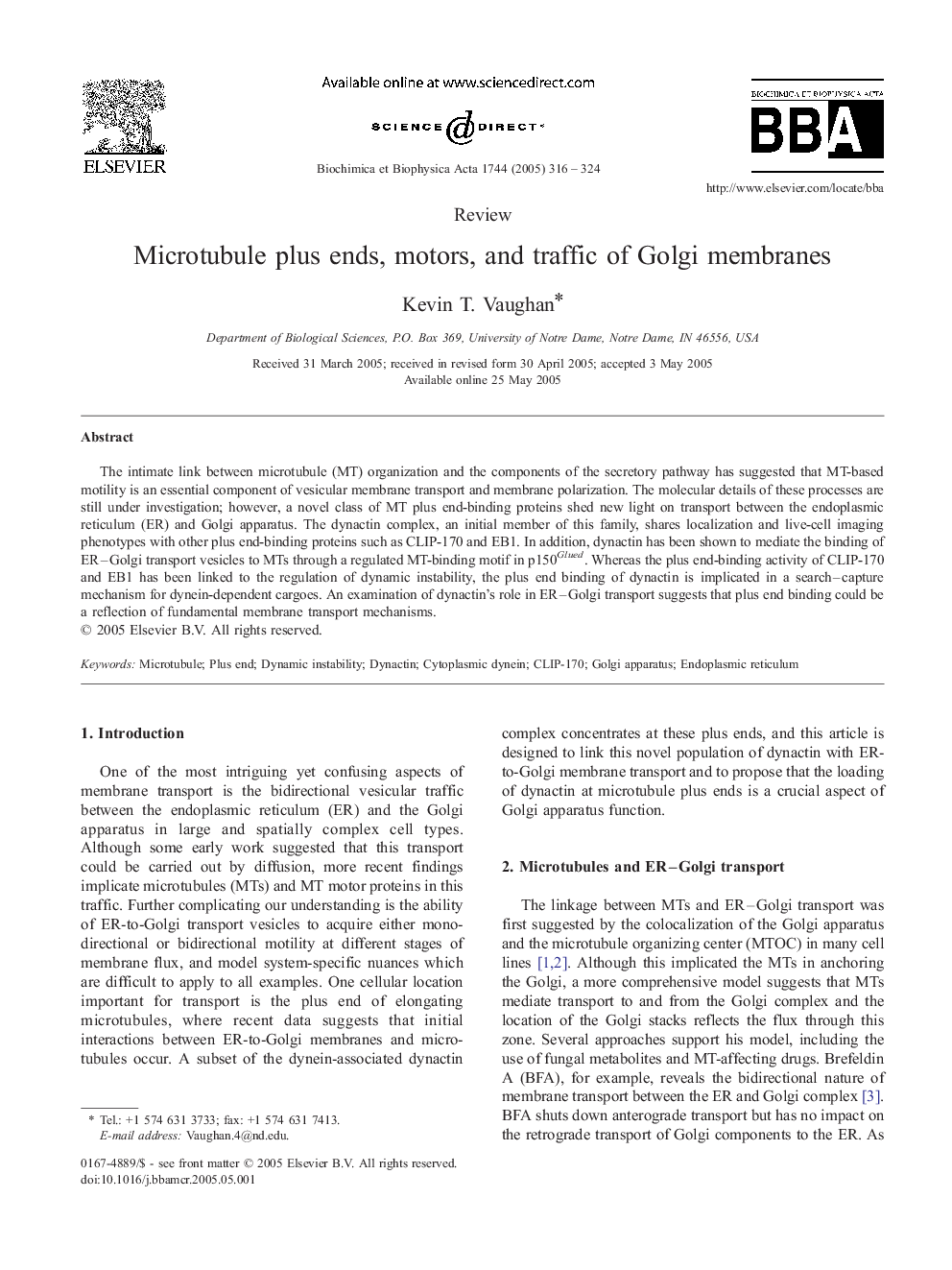| Article ID | Journal | Published Year | Pages | File Type |
|---|---|---|---|---|
| 10803159 | Biochimica et Biophysica Acta (BBA) - Molecular Cell Research | 2005 | 9 Pages |
Abstract
The intimate link between microtubule (MT) organization and the components of the secretory pathway has suggested that MT-based motility is an essential component of vesicular membrane transport and membrane polarization. The molecular details of these processes are still under investigation; however, a novel class of MT plus end-binding proteins shed new light on transport between the endoplasmic reticulum (ER) and Golgi apparatus. The dynactin complex, an initial member of this family, shares localization and live-cell imaging phenotypes with other plus end-binding proteins such as CLIP-170 and EB1. In addition, dynactin has been shown to mediate the binding of ER-Golgi transport vesicles to MTs through a regulated MT-binding motif in p150Glued. Whereas the plus end-binding activity of CLIP-170 and EB1 has been linked to the regulation of dynamic instability, the plus end binding of dynactin is implicated in a search-capture mechanism for dynein-dependent cargoes. An examination of dynactin's role in ER-Golgi transport suggests that plus end binding could be a reflection of fundamental membrane transport mechanisms.
Keywords
Related Topics
Life Sciences
Biochemistry, Genetics and Molecular Biology
Biochemistry
Authors
Kevin T. Vaughan,
